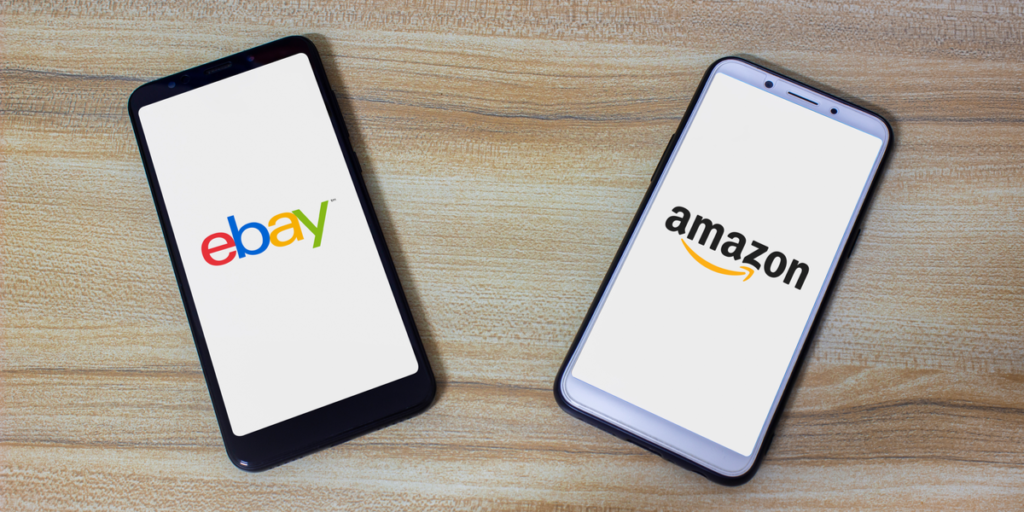An unprecedented Golden Quarter on the horizon, and no doubt your planning and preparations are in full swing – swinging between social restrictions, lockdowns, phases, levels or tiers that is. Alas, we are not here to wallow, we continue to open your business up to pending opportunities and optimise your online presence before Cyber Weekend. Today we’re discussing Marketplaces and the simple steps you need to complete now in order to get the most out of this avenue as the shopping holiday approaches… So, let’s dive in.
1. Define your Black Friday success
What is it that a “successful” Black Friday means to you? Is it to have increased sales? Increased conversions? Increased traffic? Increased customer retention rates? Perhaps this year your goal is to shift stock that was stuck during lockdown? In an ideal world, you would satisfy all of these goals in a single swoop, but different elements of your strategy can impact each of these targets differently, and so too can utilising marketplaces.
With a clear focus in mind, marketplaces are a great way to increase your reach – particularly if you’re seeking to increase overall sales or want to move unwanted stock. (Just be sure that your target market is likely to be using those marketplaces). However, if you have longer-term goals such as building your brand, you may want to steer your consumers directly to your website.
According to bloomreach, shoppers are twice as likely to start their product searches on Amazon than on Google. But remember, Amazon, in particular, is a vast marketplace and you need your products to stand out. While you can “advertise” on Amazon, it has its drawbacks, as you’re really just paying them to advertise the product that you’re selling on their website instead of investing in driving traffic to your own. Once a sale is made, a significant percentage of your sale’s profits also goes to the marketplace. Therefore, retailers could use this as an opportunity to breadcrumb consumers back to their site and explore their offering further, to avoid hiking prices. For instance, if you sell footwear, perhaps list one particular style or colour on Amazon, that way you are still listing your product, but also enticing potential customers back to your site if they are looking for another colour or style of that particular item.
So make sure the purpose, justifies the means. For increased sales, reach and conversions opt for marketplaces.
For increased traffic and customer retention, it might be better to focus on your website CX and it’s offerings.

2. Choose the right marketplace for your product
What exactly is the right marketplace for your brand? Different sales channels have different subscription costs and plans and, in return, they also offer different services. It is better to shortlist a few channels and then carefully go through their specific plans to choose the ones that you want to go for. For example, sellers of beauty products might want to opt for the likes of BeautyBay.com, while those in fashion could lean more towards sites like Yocabe. Small retailers can also opt for the likes of Depop, in the run-up to Black Friday. Depop is an online marketplace which has opened the door for local designers and entrepreneurs to start their small business with just a smartphone.
However, it is not only traditional marketplaces that are available to retailers, If brands tend to default to Amazon in their marketplace choice, on social networks, they naturally start out on Facebook.
But each platform has unique user behaviours and features that brands must recognise. – similar to Depop, social is a good place to start for even small retailers, as it removes the intimidation of dealing with massive conglomerates such as Amazon or eBay
You can use social marketplaces to your advantage by gauging audience demographics and where they might be and even at what times of the day (you can find this information when you look to the insights tab on your social platforms.), Whether you want to showcase a range of products via a carousel ad or to create ‘buy the lifestyle’ envy with video or ‘Shop the Pins’, social media images are impactful sales drivers.
So when it comes to choosing your marketplace, consider your time, your audience and your product in order to find the channel that works best for you.

3. Consider the Customer Experience
Ensure the marketplace you select offers top-notch customer experience. Whether they are on your website or not, the consumer is still likely to associate the experience with your product, and a negative experience will hinder your customer retention. When you’re selling on a marketplace, you can’t tailor the entire sales experience like you can on your own eCommerce site. But there are elements you can control and with these, consistency is vital.
Use your logo, colours, and other branding elements where you can and ensure all copy is consistent with your brand’s voice and image. Overall, make sure you’re providing the same high-quality customer service marketplace sales that you do for sales on your own site – If any online marketplace provides poor customer service, it is going to harm your brand or product reputation as well. Amazon shoppers are recording increased negative experiences since the pandemic – so if maintaining a great CX is one of your priorities, it might be better to opt for social media marketplaces where you have a bit more control over the customer care and responses.
However, you could even take it into your own hands to provide explanations that guide the consumer through the returns process or to communicate other charges such as delivery. Clarity is key for great customer journeys.
You also need to inform customers about the marketplace that you’re using and make it easy for them to find and navigate it. Especially when it comes to Black Friday, if consumers know they can find you there while shopping for their list of other items, it makes their life more convenient by being able to fill up one basket.

4. Organise your marketplace marketing
Marketplaces are busy places, with lots of potential customers – but also a lot of competition. So, you have to ensure your products stand out if you want to be found by the right people.
Focusing on your product descriptions and images is the first place to start, not only in terms of standing out, but context will improve the customer experience and increase initial trust in your products.
About 22% of online returns are made as a result of products looking different in reality to what’s displayed on your website. Context is everything. So your product descriptions need to be, for lack of a better term…descriptive. Detailed sizing guides, product specifications, and additional benefits should be included wherever necessary. And even if you do all of this, there’s a very good chance that your product descriptions are only going to be skimmed by shoppers. For example, if you’re selling a dress and you have all of these fabulous images on your product pages of a model wearing it, you need to list the model’s height in the product description, so that potential customers can gauge how long or short it would be on them.
So cover all your bases with high quality, true to life product images and videos to ensure that they also tell your customers the story of exactly what the product is, who it’s for, and why they need it.

5. Optimise your stock/warehouses
If you are a retailer with an eCommerce site as well as a marketplace presence, it’s vital to optimise your product selection and order fulfilment process. Why? Because synchronised stock lists are vital for minimising errors and disruptions. Nothing will annoy your consumer more than being given the ability to purchase an item, only to find it is sold out upon checking out.
Manually managing your orders is a time-intensive task as it includes manually listing products across all channels and updating them each time you make a sale, as well as the requirement to monitor, manage and fulfill orders on individual channels.
The use of an inventory and order management solution reduces these risks, enabling you to synchronise your stock across all channels, automate processes and manage your orders with ease.
(Should marketplace selling be something you are now considering, why not learn more about our Kooomo OMS? Which you can find here.)
Conclusions
Marketplaces offer a great opportunity to retailers, especially those who find themselves a little bit more restricted ahead of Black Friday – but be sure to take all aspects into consideration. While they are a great fit for some products, for some retailers the end may not justify the means. Know your objectives, have a balanced strategy and learn from the statistics.
Black Friday is the perfect time to experiment with your overstock caused by the pandemic – with marketplaces, you can test the waters in new territories and assess the possibility of going global. Bear in mind, our summer season is the southern hemisphere’s winter season, so if you have seasonal products, you can definitely use marketplaces to your advantage for testing the international waters.
And should you be an existing Kooomo client who wishes to extend into this channel, don’t hesitate to contact your account manager to get all the further information you need to get the wheels in motion.

AUTHOR
Lauren Cassidy Content Marketer, Kooomo
